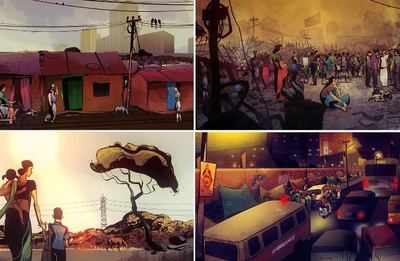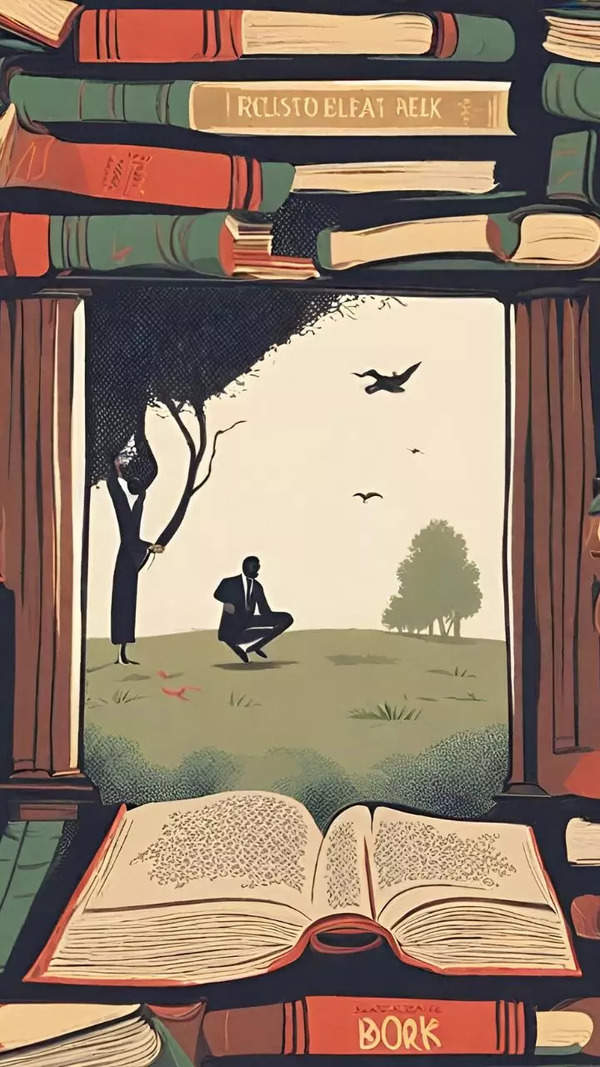- News
- entertainment
- tamil
- movies
- Tamil directors opt for animation to make an impact
Trending
This story is from May 8, 2015
Tamil directors opt for animation to make an impact
Filmmakers are increasingly using animation sequences to add more impact to their storytelling.

Kollywood filmmakers are increasingly using animation sequences to add more impact to their storytelling. The latest in this list is Mani Ratnam, whose O Kadhal Kanmani contains animation sequences that depict the game the film���s hero is working on. Interestingly, the very idea of using such forms of storytelling in live action films is something that was first attempted in a Tamil film ��� Kamal Haasan���s Aalavandhan.In fact, it was this film that inspired Quentin Tarantino to use animation for one of the chapters in the first Kill Bill movie.
Later, the seventh Harry Potter film, Harry Potter And The Deathy Hallows: Part 1 used shadow-puppet animation to present the story of the three hallows. For presenting flashbacks and depicting sensitive issues like pedophilia (Nee Naan Nizhal), communal riots and extreme violence, animation has now become a handy tool to effectively convey what directors have to say without being dragged into a controversy for depicting all that gore and violence on screen. A few instances...
O Kadhal Kanmani
Year: 2015 | Studio: Plexus Post, Studio Kokachi (2D), Studio Dreamcatcher and Firefly (3D) | Time: 17 days (title sequence) | Budget: ` 1.5 crore (approx)

Sathuranka Vettai
Year: 2014 | Studio: Hybrid Studios | Time: 2 months |
Budget: ` 2.5 lakh
Why:Given that the flashback of the lead, Nataraj, is set in the 1980s, director H Vinoth felt that animation will be cheaper and better than live action because he can get the look and feel he had envisioned. He was impressed with what Naveen had done in Moodar Koodam and through him, sought out the animators, Senthil and Jai, who had worked on that film. He used references to the period that were relatable to the audience and to keep the cost minimal, the team made only drawings of the scenes and then used the camera to create a sense of movement.

Aalavandhan
Year: 2001 | Studio: V3 | Time: A few months | Budget: No exact figure because it was a combined one for animation scenes and VFX sequences
Why: Director Suresh Krissna says that it was Kamal Haasan who decided to go for animation sequences for certain portions of the film because they were extremely violent, more so because his character was torturing a woman. VFX expert Madhusudhanan and his team worked on these sequences. An Australian visual effects company was involved in the film, which had extensive VFX because the team shot the scenes featuring the two roles that Kamal Haasan played almost six months apart!

Poovarasam Peepee
Year: 2014 | Studio: Criya | Time: 3 months | Budget: Rs 1.5 lakh (plus ` 30,000 for storyboard artist)
Why: The scene was that of a Hindu-Muslim communal clash and the director, Halitha Shameem, wanted to present this from the point of view of the film���s leads ��� three school boys. Since filming it in live action would not have created the same impact, she chose 2D animation. Illustrator Hasis Khan did the storyboard work and this was then presented to an animation company, which designed the sequence.

Moodar Koodam
Year: 2013 | Studio: Hybrid Studios | Time: 4 months | Budget: ` 19 lakhs (including reworks)
Why: For the character of Kuberan���s childhood episode, director Naveen opted for animation as he could narrate the story in a shorter time, complete with the exaggerated expressions of the animated characters and thereby create a greater impact. Interestingly, he has used only 2D and 3D animation ��� the background and crowd characters are in 2D while the main characters are in 3D.

Later, the seventh Harry Potter film, Harry Potter And The Deathy Hallows: Part 1 used shadow-puppet animation to present the story of the three hallows. For presenting flashbacks and depicting sensitive issues like pedophilia (Nee Naan Nizhal), communal riots and extreme violence, animation has now become a handy tool to effectively convey what directors have to say without being dragged into a controversy for depicting all that gore and violence on screen. A few instances...
O Kadhal Kanmani
Year: 2015 | Studio: Plexus Post, Studio Kokachi (2D), Studio Dreamcatcher and Firefly (3D) | Time: 17 days (title sequence) | Budget: ` 1.5 crore (approx)
Why: The film���s hero is a game developer who develops a Bond-style action-packed thriller game set in Mumbai, called Mumbai 2.0. So, in the film���s title sequence, Mani Ratnam used animation as he wanted it to have the feel of a game trailer. VFX artist Vijesh Rajan says that the title sequence, involving shootouts, gang battles, hundreds of extras, explosions, parkour chases, etc, would���ve definitely been way more expensive to shoot in live action. And though doing all this in animation would���ve taken his team of five around a month-and-a-half, they had only three weeks to execute the sequence. The game visuals inside the movie and the animation for the epilogue were done by Bangalore-based Studio Kokachi, which did the 2D segments while another Bangalore company, Studio Dreamcatcher and Firefly, a VFX company in Hyderabad, did the 3D elements in these portions.

Sathuranka Vettai
Year: 2014 | Studio: Hybrid Studios | Time: 2 months |
Budget: ` 2.5 lakh
Why:Given that the flashback of the lead, Nataraj, is set in the 1980s, director H Vinoth felt that animation will be cheaper and better than live action because he can get the look and feel he had envisioned. He was impressed with what Naveen had done in Moodar Koodam and through him, sought out the animators, Senthil and Jai, who had worked on that film. He used references to the period that were relatable to the audience and to keep the cost minimal, the team made only drawings of the scenes and then used the camera to create a sense of movement.

Aalavandhan
Year: 2001 | Studio: V3 | Time: A few months | Budget: No exact figure because it was a combined one for animation scenes and VFX sequences
Why: Director Suresh Krissna says that it was Kamal Haasan who decided to go for animation sequences for certain portions of the film because they were extremely violent, more so because his character was torturing a woman. VFX expert Madhusudhanan and his team worked on these sequences. An Australian visual effects company was involved in the film, which had extensive VFX because the team shot the scenes featuring the two roles that Kamal Haasan played almost six months apart!

Poovarasam Peepee
Year: 2014 | Studio: Criya | Time: 3 months | Budget: Rs 1.5 lakh (plus ` 30,000 for storyboard artist)
Why: The scene was that of a Hindu-Muslim communal clash and the director, Halitha Shameem, wanted to present this from the point of view of the film���s leads ��� three school boys. Since filming it in live action would not have created the same impact, she chose 2D animation. Illustrator Hasis Khan did the storyboard work and this was then presented to an animation company, which designed the sequence.

Moodar Koodam
Year: 2013 | Studio: Hybrid Studios | Time: 4 months | Budget: ` 19 lakhs (including reworks)
Why: For the character of Kuberan���s childhood episode, director Naveen opted for animation as he could narrate the story in a shorter time, complete with the exaggerated expressions of the animated characters and thereby create a greater impact. Interestingly, he has used only 2D and 3D animation ��� the background and crowd characters are in 2D while the main characters are in 3D.

End of Article
FOLLOW US ON SOCIAL MEDIA








